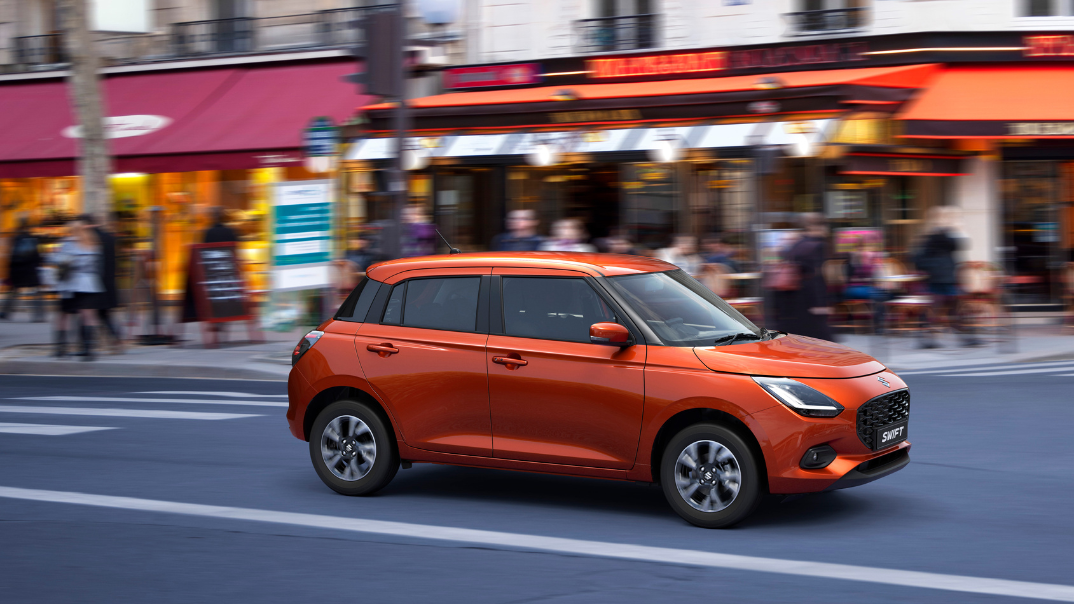
With CO2 emissions being such a controversial issue and everybody is trying to find the right ways to do this, we think that over legislating how to do this could curb creative solutions and ultimately hinder progress.
Raging wildfires, catastrophic floods, chronic drought and increasingly severe weather patterns are all tangible proof this earth of ours is undergoing major changes – and we, as inhabitants, have accelerated or precipitated this change.
While the automotive industry has, over the past 10 or so years, become the whipping boy for the environmental movement, it is an undeniable fact exhaust emissions are an agitator in the global climatic scenario, and need to be curbed.
However, since the fuel crisis of the 1970s motor makers have been steadily working on ways to reduce fuel consumption, more recently combining that with the reduction of exhaust gases along with investigations into the viability of alternative fuel and energy sources.
This research has not come up with a single ‘one-size-fits-all’ solution and the work is still very much in progress. However, there is a danger national or even regional legislation around the world could interfere and adversely affect the process.
Already, in the USA, some local emissions requirements mean hauliers cannot cross state lines, as their trucks do not meet the specific laws of one or more states.

It is an emotive issue at all levels, but it is vital each motor manufacturer be left to find the solution that best suits the product and its own capabilities – whether this be in the form of hybrid vehicles, electric vehicles, hydrogen power, bio-diesel or liquid gas.
Alternately fueled vehicles
Lightstone, one of South Africa’s leading analytics and data companies has shown since the inception of electrically powered vehicles (EV) in South Africa a small total have been sold.
The idea of owning a re-chargeable lithium battery-powered vehicle may seem inconvenient but with many office parks, shopping centre parking lots and service stations starting to include EV recharging zones, owning an electric car could become practical.
Charging facilities are currently available in each province with Gauteng as the front-runner with more than 90 stations. Charging at home is the most convenient, but will need a qualified electrician to investigate the electrical wiring to ensure it is equipped with three-phase power distribution.
Lightstone also looked at the weighted average fuel consumption of vehicles between 2006 and 2015, and found vehicles across the board have streamlined processes and efficiency to provide motorists with more bang for their (fuel) buck.
In 2006, the weighted average fuel consumption of passenger (PAS) vehicles was at 7,19 l/100 km and, in August 2015, that number dipped to 5,86 l/100 km. Light commercial vehicles (LCV) average fuel consumption in 2006 was 10,3 l/100 km, and in 2015, this decreased to 8,42 l/100 km.
Factors contributing to this include strict emissions standards abroad and the availability of cleaner fuel such as 20-ppm diesel.
Lightstone's data also looked at the average kilowatt per engine size (in litres) and it is evident there was an increase of roughly 3 kW's between 2003 and 2007. Bigger engines no longer mean better. The bigger the size of the engine, the more fuel is burnt and more byproducts emitted, ultimately resulting in higher emission tax to be paid by manufacturers to produce a vehicle.
In 2015, PAS vehicles had an average of 69,5 kW, whereas in 2005 they were sitting on 53,8 kW – a 14,5% increase over eight years.
"Engine manufacturers have moved away from increasing combustion chamber size and have begun to increase power. These days it is all about getting maximum combustion percentage from each fuel-air mix particle, meaning that the size of the combustion chamber is not so important for roadfaring motor vehicles any longer," says Heinrich Coetzee from Lightstone Auto.
Electric cars will find their place and the uptake will steadily grow but anyone claiming these as ‘zero emission’ is misleading people.
In fact, there is published evidence from many sources showing electric cars can be worse than conventional cars when it comes to greenhouse gas emissions.
It may be true the final ‘on road’ product produces no exhaust gases or CO2 but, the whole-life process from raw material sourcing through component manufacture, vehicle assembly and finally disposal often comes at a significant environmental cost.
In the South African scenario where the bulk of our power comes from coal-burning power stations, the source of the pollution moves from the car to a power plant. That is especially true when it comes to CO2 emissions, which the power plant might pump out in copious amounts, so, every time an electric car is recharged; it is contributing to additional CO2 emissions.
What is the carbon footprint of manufacturing a Tesla? This question posted on Quora: the knowledge-sharing network where people with unique insights answer compelling questions was answered by Mike Barnard, Executive Consultant, Energy and Cloud at IBM: “The Union of Concerned Scientists did the best and most rigorous assessment of the carbon footprint of Teslas and other electric vehicles vs internal combustion vehicles including hybrids.
“They found the manufacturing of a full-sized Tesla Model S rear-wheel drive car with an 85 KWH battery was equivalent to a full-sized internal combustion car except for the battery, which added 15% or one metric ton of CO2 emissions to the total manufacturing.
“However, they found this was trivial compared to the emissions avoided due to not burning fossil fuels to move the car. Before anyone says ‘But SA made electricity is generated from coal!’, they took that into account too, and it is included in the 53% overall reduction.
“A report by the Ricardo consultancy estimated that production of an average petrol car will involve emissions amounting to the equivalent of 5,6 tonnes of CO2, while for an average electric car, the figure is 8,8 tonnes. Of that, nearly half is incurred in producing the battery. Despite this, the same report estimated that over its whole life cycle, the electric car would still be responsible for 80% of the emissions of the petrol car.”
In a country where load shedding is now a national punchline, is there a market for electrical cars?
Perhaps, like Suzuki and other automakers, the way forward – at least right now – is the hybrid vehicle using a combination of electrical power and a small capacity combustion engine; particularly if that hybrid generates its own electricity to keep the batteries charged.
Initially pioneered by Toyota with the Prius, this alternative is gaining sales traction around the world and each model iteration is more efficient than the previous one.
Plug-in electric vehicles (PHEV) are becoming increasingly common and act as a halfway house between internal combustion engine (ICE) and full electric. They can run like a regular hybrid, only topping up the battery when coasting and braking, but can also be plugged in to a public EV charger. These cars can often cover the daily commute without using their engine, and PHEV technology already appears on a wide range of vehicles, including the VW Golf GTE, Mini Countryman Hybrid and Range Rover P400e.
There is still an internal combustion engine to maintain, but a nightly charge of the battery means you might not need to use it very often if your commute is short. For example, the Golf GTE and new Range Rover each have an electric range of 50 kilometres.
The other alternatives such as hydrogen, bio-diesel and liquefied petroleum gas also have drawbacks in terms of their impact on the environment during the production phase; sheer cost of production or other elements that impact the cost-effectiveness of the process.
Greenhouse gas emissions are a global problem and need to be addressed but this needs to be a holistic approach rather than regionalised or over zealously legislated and should be left to the manufacturers to decide the route they need to take.
Want to find out more about our thoughts on topics like self-driving cars and why we think SA isn’t ready for them yet? Subscribe to the Suzuki blog and stay up to date with all our latest articles.
Download our Ebook on how to extend the lifespan of your car.



-3.png)
